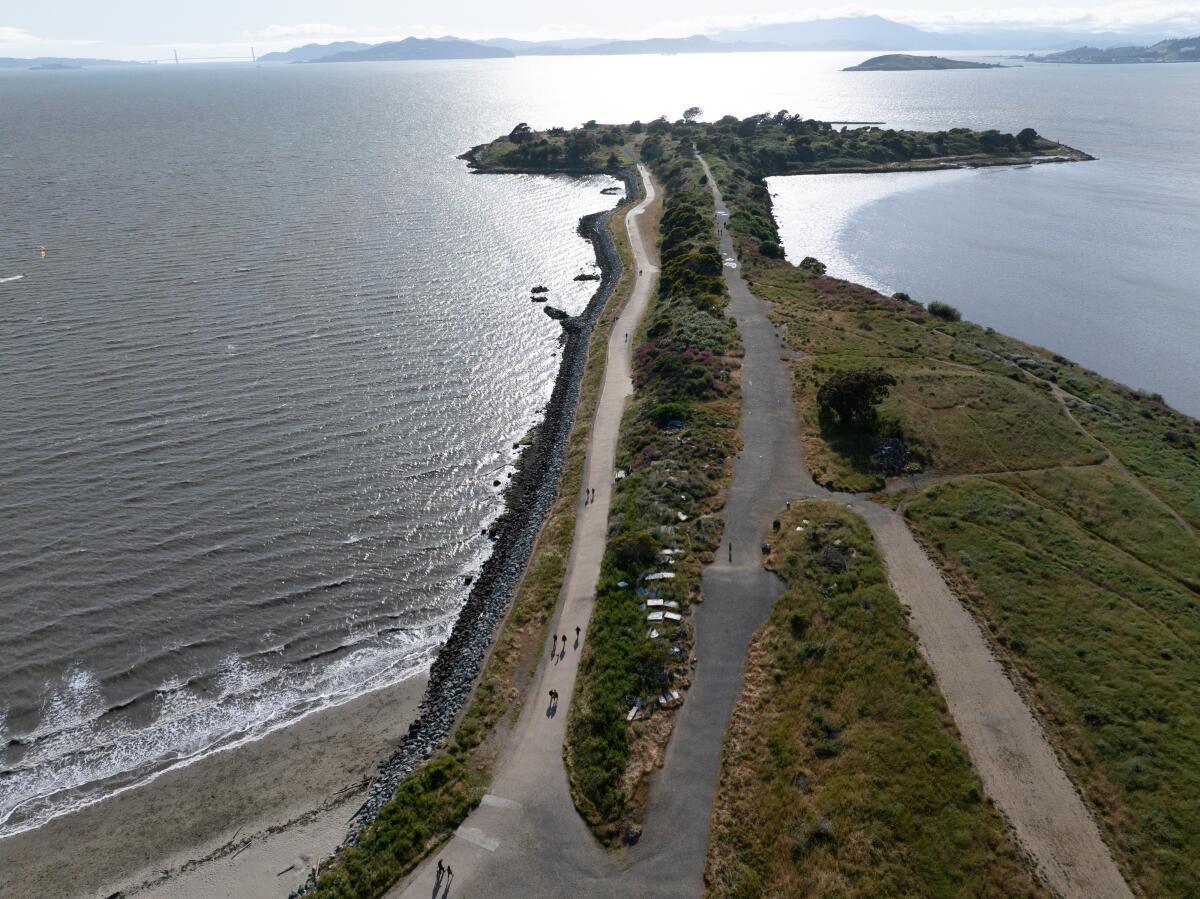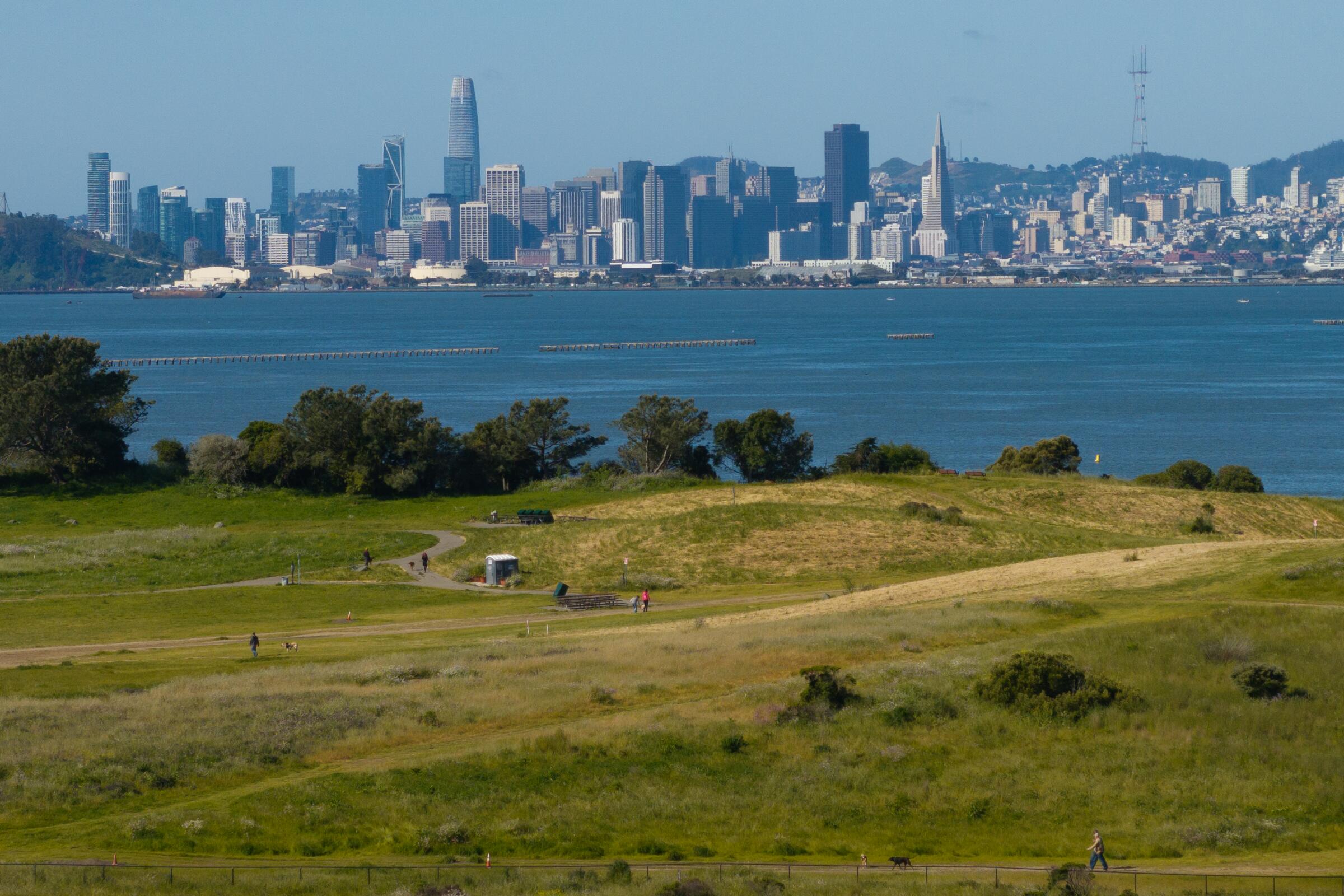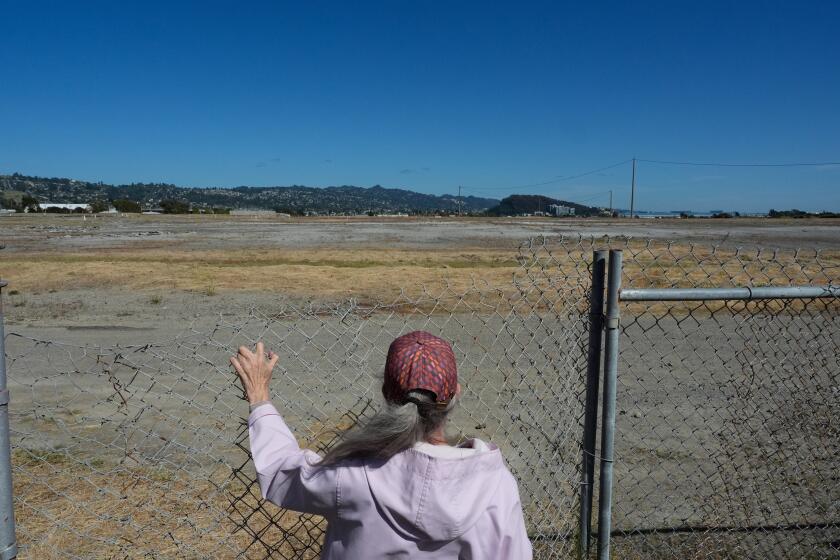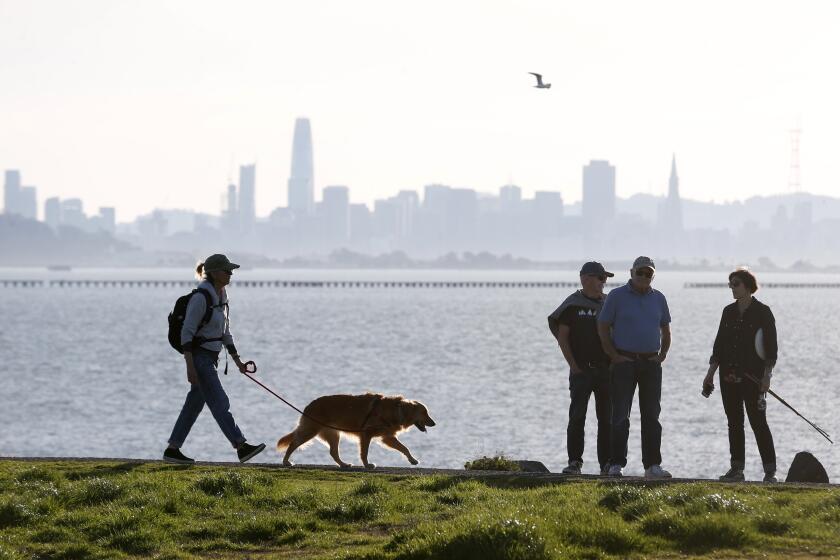Tony Briscoe is an environmental reporter with the Los Angeles Times. His coverage focuses on the intersection of air quality and environmental health. Prior to joining The Times, Briscoe was an investigative reporter for ProPublica in Chicago and an environmental beat reporter at the Chicago Tribune.
1
Months after discovering that radioactive waste and toxic pesticides may be buried under two popular Bay Area parks, state regulators have rejected Berkeley’s plan to test for contaminants as insufficient.
In January, the San Francisco Bay Regional Water Quality Board informed the cities of Albany and Berkeley that a former chemical plant had disposed of 11,100 tons of industrial waste at their municipal landfills decades ago. The revelation came after the Department of Toxic Substance Control shared a 1980 document detailing the disposal records of Stauffer Chemical Co.’s Richmond plant.
Aggressive and impactful reporting on climate change, the environment, health and science.
Berkeley’s landfill has since been converted into 90-acre César Chávez Park, while Albany’s has evolved into a 40-acre recreational area called the Bulb.
The water board demanded the cities to submit plans by April to scan these areas for cancer-causing gamma radiation and sample for banned pesticides, including DDT.
Albany’s plans for the Bulb were approved and testing is expected to begin this month. Berkeley’s proposal for César Chávez , however, was denied as the water board cited major concerns with the city’s methodology.
A former chemical plant dumped thousands of tons of industrial waste around the San Francisco Bay Area. The deposits were made in places that are now open to the public — and could contain radioactive material.
Berkeley’s contractor, SCS Engineers, called for an inspector to walk in long, straight lines across César Chávez with a radioactivity detector. But the plan allowed for spacing up to 100 feet between each walked path, meaning “it would result in a significant portion of the site not being surveyed,” according to a May 16 letter from Eileen White, the executive officer of the regional water board.
“A comprehensive surface scan should cover 100 percent of the landfill surface, or as close to that as possible,” White said in the letter to SCS Engineers.
SCS Engineers also recommended that the radioactivity measured at César Chávez be compared to Blair Southern Pacific Landfill, a hazardous waste dump in Richmond that accepted Stauffer’s waste and is fenced off to prevent public access. The Berkeley-hired firm proposed flagging areas for further evaluation if gamma radiation detectors reach 80,000 counts per minute or higher.
The typical background reading is 60 counts per minute.

The Albany Bulb will be tested for radioactivity, following regulators’ approval of the city’s plan.
(Paul Kuroda / For The Times)
White, the water board executive, said Berkeley’s proposed benchmarks for what warranted further investigation were “excessively high.” She argued that if SCS was intent on comparing radiation at César Chávez to background levels, it should find a nearby site that is unaffected by chemical waste.
The water board has given Berkeley until July 1 to submit a new plan.
Berkeley spokesperson Matthai Chakko said the city has complied with all regulatory requirements from the water board. Amending testing plans, he said, is commonly part of the process.
“It is standard practice for regulated entities to submit proposed work plans to regulators for guidance, review, and revision before the plans are ultimately approved,” Chakko said.
Environmental regulators have found explosive levels of methane in a popular Berkeley park. Regulators and the city are sparring over the source of the gas and what to do about it.








